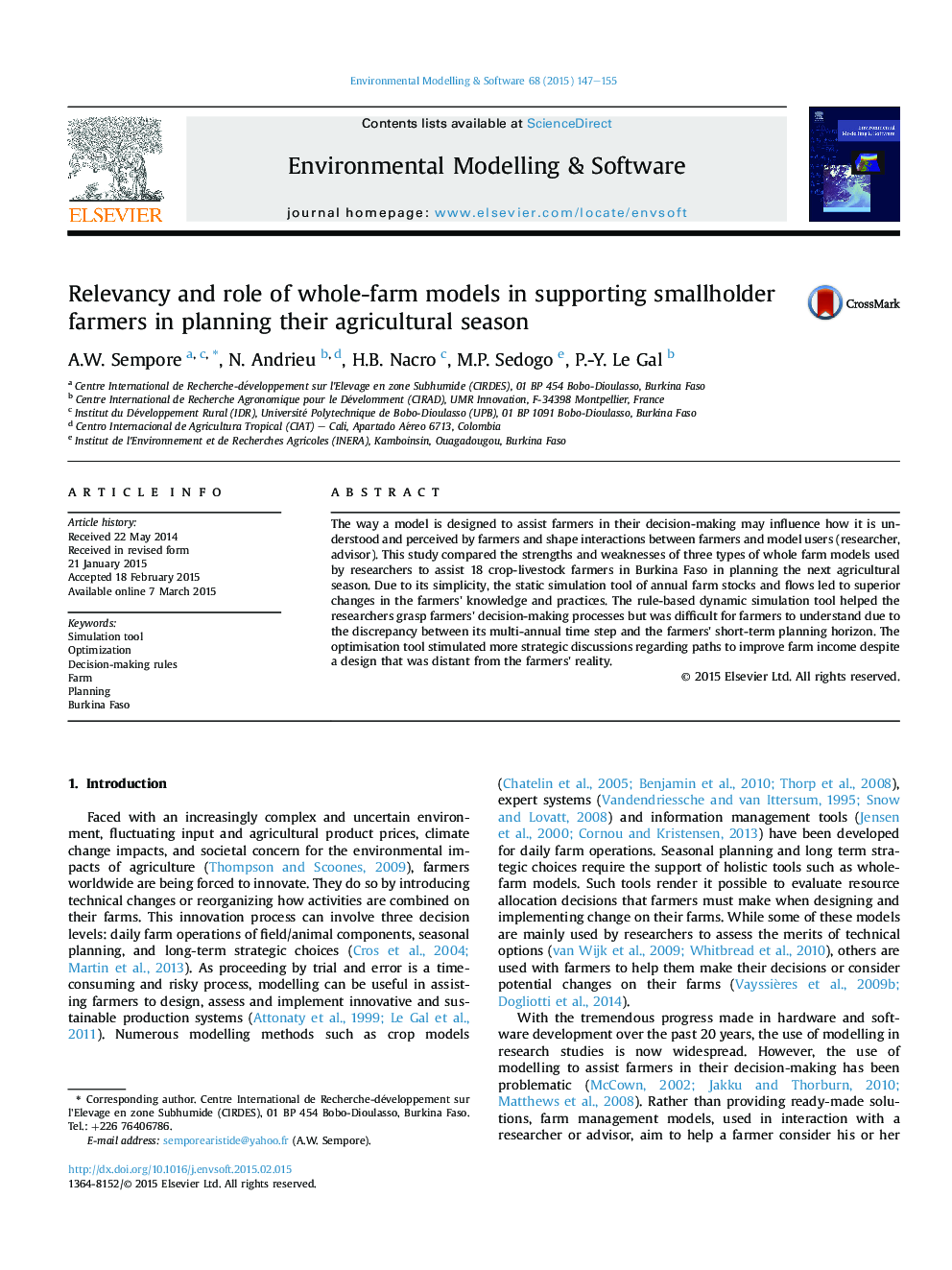| Article ID | Journal | Published Year | Pages | File Type |
|---|---|---|---|---|
| 6963341 | Environmental Modelling & Software | 2015 | 9 Pages |
Abstract
The way a model is designed to assist farmers in their decision-making may influence how it is understood and perceived by farmers and shape interactions between farmers and model users (researcher, advisor). This study compared the strengths and weaknesses of three types of whole farm models used by researchers to assist 18 crop-livestock farmers in Burkina Faso in planning the next agricultural season. Due to its simplicity, the static simulation tool of annual farm stocks and flows led to superior changes in the farmers' knowledge and practices. The rule-based dynamic simulation tool helped the researchers grasp farmers' decision-making processes but was difficult for farmers to understand due to the discrepancy between its multi-annual time step and the farmers' short-term planning horizon. The optimisation tool stimulated more strategic discussions regarding paths to improve farm income despite a design that was distant from the farmers' reality.
Related Topics
Physical Sciences and Engineering
Computer Science
Software
Authors
A.W. Sempore, N. Andrieu, H.B. Nacro, M.P. Sedogo, P.-Y. Le Gal,
